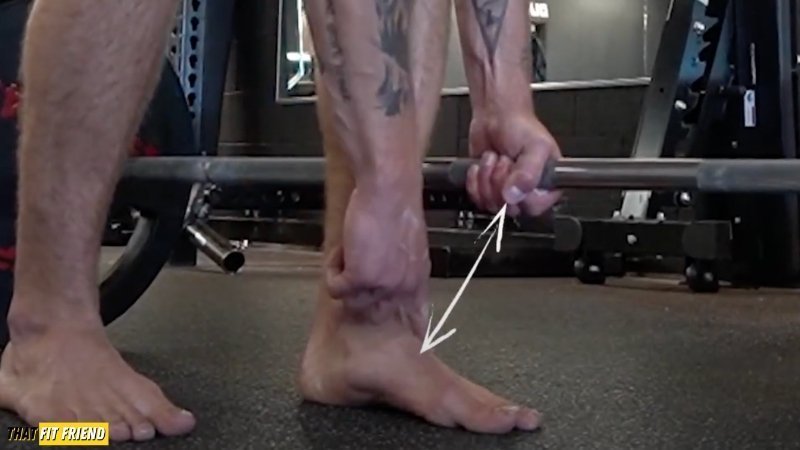The suitcase deadlift is a fun physically and mentally challenging deadlift variation. This variation can be great for building your grip and core strength, and it can help improve your overall deadlift performance.
The suitcase deadlift is an often underappreciated and underutilized deadlift variation. This deadlift variation involves picking up a weight on the side of the body.
As a strength coach, I love performing and programming suitcase deadlifts because they’re a great mental and physical challenge. Plus, they can have a nice level of carryover to real life, like picking up luggage at the airport.
Coach’s Note: If you’re new to suitcase deadlifts, then I’d suggest starting with a kettlebell or dumbbell on an elevated surface. If you start with barbell suitcase deadlifts, then I’d suggest keeping it light.
Suitcase Deadlift Benefits
Without overcomplicating the “why” behind performing suitcase deadlifts, I think there are two key suitcase deadlift benefits that are worth keeping in mind for most athletes and lifters.
Note, there are obviously more benefits to performing suitcase deadlifts than the two provided below. Benefits will ebb and flow based on your goals and training context, too.
1. Mental and Physical Challenge
When we perform traditional deadlifts, we’re lifting in a bilateral context. As in, we have both feet and hands engaged with the ground and the barbell so we have less of a balance demand on the body as we train.
When we take away some of that balance, as in one of our hands, we create a higher demand on the musculature of the body to help stabilize the weight as we lift. This can be a fun challenge for anyone not used to picking up things on one side of the body.
From a mental challenge context, we’ll have to focus on balancing the weight and changing how we deadlift to accommodate the different stability demands of the suitcase deadlift. This can be great to challenge your ability to adapt to a new type of stimulus.
For beginners, it can be important to learn how your body sequences when moving through different movement patterns and ranges of motion while managing different loads and training stimuli.
From a physical challenge context, this deadlift variation can be fun because you’ll have to work to keep the body relatively squared up forward as you lift. The body will want to twist and bend as you pick up the weight, and fighting this can be a fun physical challenge.
If you choose to use a barbell with your suitcase deadlifts, then you’ll also have a really tough and fun grip challenge on top of the full-body work you’ll get with this exercise. That said, if your goal is grip strength, then I’d suggest using barbell suitcase deadlifts.
2. Great for Core Strength
Another suitcase deadlift benefit is how great they can for building core strength and they have some real-life carryover. When you pick up the barbell, your obliques and core muscles are going to have to work hard to stabilize the torso.
Your obliques will have to resist getting pulled into lateral flexion and the core muscles will be working to keep your torso relatively squared up forward. Suitcase deadlifts can be great for anti-lateral flexion training.
Plus, you can typically load suitcase deadlifts heavier than other core-only exercises so they can also be great for overloading the core muscles strategically.
On top of the suitcase deadlift’s core strength benefit, they can also create some real-world carryover. Note, every exercise can have a functional and real-world carryover depending on the lens you’re looking through when performing your exercises.
In the context of suitcase deadlifts, though, they can build your strength when doing things like picking up luggage at the airport, doing yard work, and carrying supplies and tools around, and when scooping up your kid/niece/nephew in one arm, to name a few.
Suitcase Deadlift Mistakes
When starting to program and use suitcase deadlifts, there are two common mistakes that I’ll see lifters run into. If you can avoid these suitcase deadlift mistakes, then you’ll be well on your way to mastering this exercise’s form.
1. Setting Up Unbalanced
The first mistake is to avoid setting up where your balance will be off. When you set up your dumbbell, kettlebell, or barbell, you want to make sure the middle of the handle is aligned with your midfoot.
This will make it easier for you to lift the weight because you’ll start your deadlift more balanced, and you’ll also be better able to sequence your hips and knees accordingly to better build the musculature around them.
When in doubt, pay attention to how the weight is making contact with the ground when you’re completing a rep. If one side of the weight is hitting before the other by a noticeable amount, check your stance and how you’re breaking at the knees and hips.
2. Over Extending and Flexing
Another mistake that I’ll see lifters make is letting the weight completely control their torso position. More specifically, I’m talking about over-flexing and extending the spine when completing reps.
If you notice the following, then you may want to work with a lighter weight to dial in your suitcase deadlift form,
- Your hips are rising faster than your torso when standing up with suitcase deadlifts.
- You’re over-flexing the torso when lifting then over-extending at the top.
When in doubt, your torso and hips should move at the same time with suitcase deadlifts and your hips should remain relatively straightforward when doing reps. Don’t be afraid to regress with weight if you’re having trouble doing this.
Takeaway Thoughts
The suitcase deadlift can be an awesome deadlift variation to program for strength and stability. This variation creates a high demand on the core while still training the primary muscles worked with deadlifts.
If you’re new to suitcase deadlifts, then I’d suggest starting to use them as an accessory and core-focused exercise. As you get more proficient with your form, you can then shift your focus to building strength with them.
If you have additional questions about suitcase deadlifts and using them in your workouts, drop a comment below or reach out to me personally via Instagram (@jake_boly or @that_fit_friend).


















Add a Comment